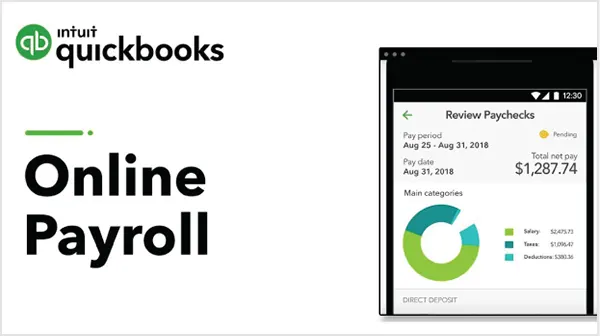What is Payroll Processing? Learn How Payroll Processing Works and Why It Is So Important
Payroll processing is a major driving forces that motivates all employees to work and contribute to the growth of an organization. If you are a new business owner, you need to learn how payroll works to keep your workers happy and pay them on time.
Processing the payroll is an intricate task that keeps getting more complicated as the number of employees increases. Whether you run a small firm or a multinational corporation, you need to cross the learning curve and optimize the whole process for the benefit of both the company and the employees.
We have prepared a guide to explain payroll processing clearly and concisely and discuss the many factors involved.
What is Payroll Processing?

Payroll processing refers to the task of calculating and paying stipends to the employees of a company as a form of compensation. The process covers everything from tax to calculating wages payable for the work an employee has done each day for a certain period.
To ensure that all employees are paid on time, many steps are taken to ensure that all calculations are made the right way while also complying with various industry practices. Depending on the size of your organization, processing the salaries of the employees can be time-consuming and also bring out the potential for error.
Since payroll services is one of the most vital tasks for a company due to the effect it has on the employees, it is required to be done the right way without any errors.
Different Stages of Payroll Processing
Payment processing can be divided into different stages to help you understand it better. Something as complex demands great attention and knowledge to be done the right way. Here are the three stages of payroll processing:
Data Collection
Before paying your employees, you need to first know how much your employees have worked and what you are paying them for. To do this, you need to track a bunch of information like working hours, attendance, bonuses, overtime, etc. Collecting all this data, you can then use this data to figure out how much you have to pay and how much to cut.
Calculating Wages and Deductions
With the data by your side, you can now calculate each employee’s gross pay based on their work and then make the deductions according to the state tax laws. Taking out the deductions from the gross pay, you will then find out the net pay.
In this stage of the process, it is important to double-check every detail to make sure there are no mistakes, as it can affect your employees.
Payment Processing
In the final stage, you can start paying your employees. Knowing how much you have to pay them, it is important to credit the salaries ASAP to help the employees. Most companies have set a permanent date on which they send out the salaries to their employees, which is highly beneficial for both employees and human resources.
After payment processing, you also need to record each transaction and file payroll taxes. For accurate records, businesses can integrate bookkeeping services to maintain payroll logs and ensure compliance.
Also Read: What is Tax Liability? Explore Popular Tips to Minimize Your Tax Liabilities
Why You Need to Optimize Payroll Processing for Your Employees?

Payroll processing is directly related to a company’s employee satisfaction. For most employees, getting paid is the only reason they commit to their job. Any disruptions and delays in processing employee salaries can have a huge negative impact on the future of the company.
Even small errors in processing can lead to financial strain on employees; that’s why it is important to fully optimize the payroll process in a company and keep it going smoothly.
Here are the key reasons why optimizing the payroll process is necessary for an organization:
On-Time Salaries Build Trust
Paying your employees on time builds trust towards the company and helps improve the morale of the workforce. There should be no surprise in the fact that employees expect to be paid right on time for all the work they have done since the last time they were paid. Any delays can cause serious harm to their morale and make them dissatisfied with the organization.
Since employees have their finances to deal with, it is always better to pay them right on time and support them the right way.
Increases Job Satisfaction
As an administrative task, payroll processing has a lot of weight on the conscience of the workforce. Ensuring an error-free and smooth processing will result in increased satisfaction with the company. By optimizing the payroll process, companies can show their employees how much they value them.
Managing to do this can significantly increase the job satisfaction of the employees and motivate them to keep working hard.
Maximizes Employee Retention
By mastering sending out payroll on time and without any mistakes, any company can become the best company its employees have ever worked for. Most employees only want to be paid on time without any deductions, as these issues can put a serious strain on their personal lives.
Payroll problems are one of the biggest reasons why employees start looking for a new job. By getting rid of these problems, you can maximize employee retention and make your organization look extremely organized and rewarding.
Leads to Increased Productivity
Getting rid of payroll issues, companies can save a lot of time for both HR and the employees. With no conflict and a happy team, productivity is sure to increase with time. Many companies that practice healthy payroll practices usually have a happy team of workers who are always happy to put their 100% towards doing their work and making the company grow.
Fulfills Legal Requirements
While any errors in processing the payroll lead to conflict between employees and human resources, it can also lead to trouble with the law. All kinds of payrolls are subject to legal regulations. With multiple aspects including taxes, deductions, bonuses, and more, even a single mistake can lead to big repercussions with the law. Efficient payroll practices can also tie into cash flow management services to plan for salary disbursements accurately.
By optimizing the process to be error-proof, you can comply with all the regulations and set a standard for your organization.
Payroll processing is more than just paying employees for their work, it is a major administrative task that serves both the employees’ well-being and productivity. Optimizing the whole process allows all parties to get rid of their problems and focus on the work that matters.
Different Types of Payroll Cycles
Now that you know how important payroll processing is for a company, you should also know about the different types of payroll cycles an organization can use to pay its employees.
Payment Cycles:
| Cycle | Frequency | Description |
| Hourly | Every Hour | Employees are paid on an hourly basis. |
| Daily | Each Day | Employees are paid for a single day’s work. |
| Weekly | Every Week | Salary is credited every week. |
| Bi-Weekly | Every Two Weeks | Salary comes every two weeks. |
| Semi-Monthly | Twice Every Month | Employees are paid twice every month. |
| Monthly | Once a Month | Employees get paid every month. |
These are all the payroll cycles that organizations use to pay their employees. Each cycle has its pros and cons, and each industry has a preferred cycle. Those who run a company are free to choose a cycle for processing based on their needs and resources. Learn more about biweekly vs semi-monthly pay to choose the best cycle for your business.
Suggested Read: Salary vs Hourly Payments: Which is Best Fit For You?
Top Payroll Processing Software in 2025
The method for processing the payroll has changed a lot from before. Nowadays, most companies are using automated software to do all the work and calculate how much pay should be given to an employee.
Here are our top 3 automated payroll processing software based on online research and experience.

QuickBooks uses Intuit’s comprehensive software technology to do detailed accounting work and provide exceptional processing power for payroll work. Great for managing finances, QuickBooks is the premier choice of many businesses worldwide when it comes to finding out the net pay for their employees.
QuickBooks Features:
- Automated Payroll
- Automated forms and taxes
- Next-day direct deposit
- Product support
- Easily track income and expenses
- Run enhanced reports

Best for online businesses with worldwide employees, Remote can handle complex tasks by first simplifying them with its user-friendly interface. As the name suggests, Remote specializes in handling remote/freelance employees and does great work when it comes to making sense of data.
Remote Features:
- Global Payroll control panel
- Compliance with international laws
- Managed the employer of record services
- Automate recurring payments
- Manage contractor invoices
- In-house experts for each country

Gusto is the perfect payroll software with its user-friendly HR interface that makes salary processing a matter of minutes. Making managing easy with its smart technology, Gusto has a client base of more than 4,00,000 businesses worldwide.
Gusto Features:
- Sync hours with payroll
- State tax registration for each American state
- Time tracking
- Performance management
- Insights and reports
- Manage remote teams
With these 3 software, your search for an automated payroll processing software has ended, as any of them can easily manage payrolls for hundreds of employees and get rid of the day-to-day errors.
Also Read: Payslips Explained: Components, Importance, and Everything You Must Know About
Wrapping Up
Payroll processing is a critical task that is the core of any company. Those running their agencies should take matters into their own hands to create effective strategies for the benefit of their employees.
If you want to do it right, the priority should always be the satisfaction of the workers, and then you can start focusing on the law regulations. Optimizing the payroll setup is not just about giving salaries on time; it is about revamping the whole process to get rid of anything that harms the company in the long run and adding practices that contribute to its growth.
FAQs
Ans: “Payroll is processing” usually means that necessary steps are being taken to calculate the wages of the employees and other actions like keeping a record, making deductions, and filing taxes.
Ans: Payroll processing is a complex task that requires numerous calculations based on employee data and company policies.
Ans: A payroll processor is an individual or software that calculates employee wages based on their data and the work they have performed for an organization.
Ans: The main function of payroll processing is to determine the wages of the employee for the work based on their agreements with the company and the deductions they have suffered due to taxes, attendance, and performance.